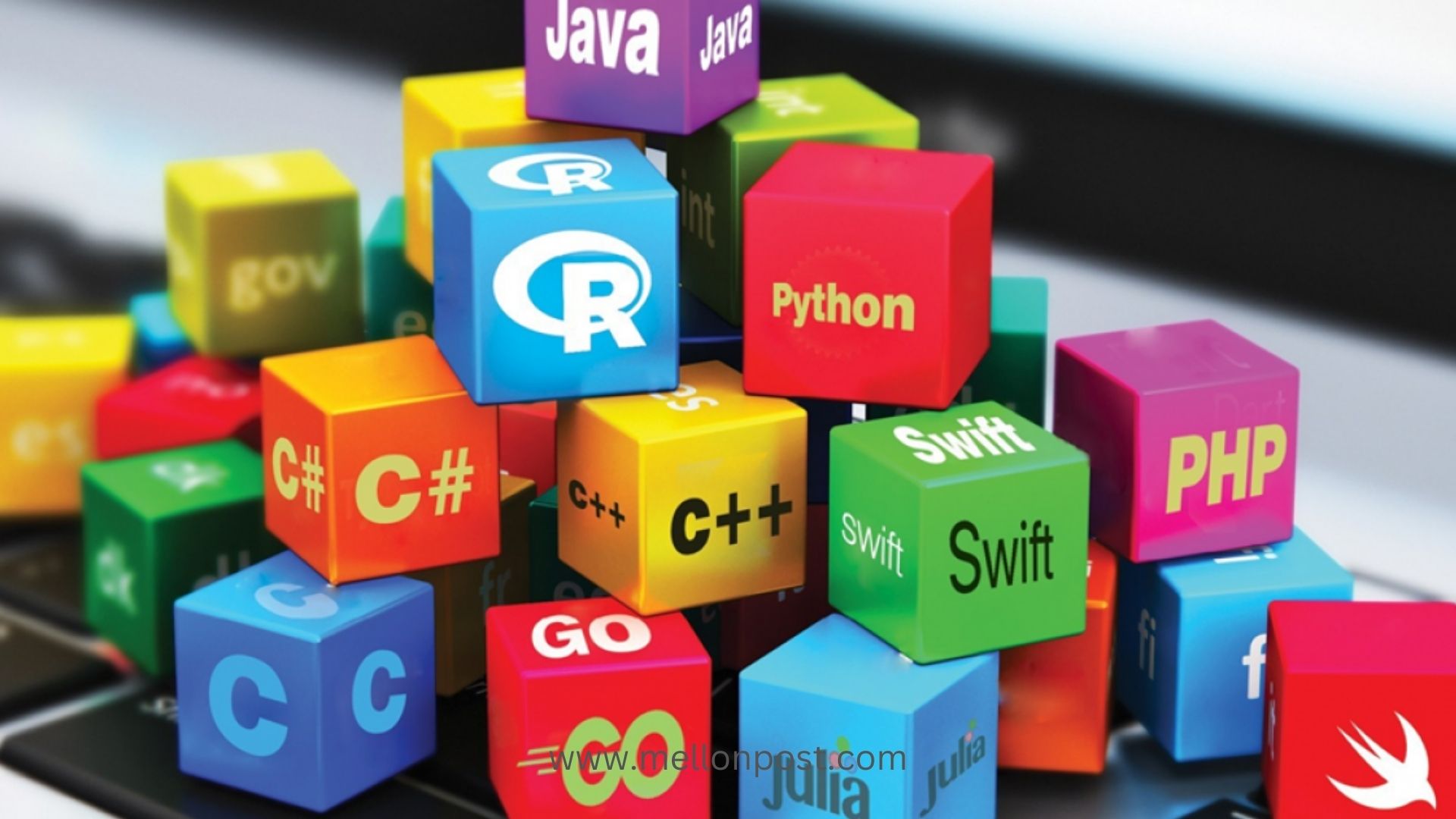
Top 10 Most Popular Programming Languages
Top 10 Most Popular Programming Languages: A Comprehensive Guide
With the tech industry booming and technology evolving rapidly, programming languages are constantly adapting to meet the needs of developers and businesses.
Choosing the right programming language is essential for various development tasks, whether it’s building a web application, designing a game, or implementing artificial intelligence.
Below is an in-depth look at the top 10 most popular programming languages in 2024, examining their features, use cases, advantages, and limitations to help you decide which language best suits your needs.
1. Python
Overview:
Python is renowned for its simplicity and readability, making it an ideal choice for beginners. Its versatility is unmatched, powering everything from web applications to data science and machine learning.
Key Features:
- Simple Syntax: Python’s easy-to-understand syntax is beginner-friendly.
- Extensive Libraries: Libraries like Pandas, TensorFlow, and Django support data science, machine learning, and web development.
- Cross-Platform Compatibility: Python is compatible with most operating systems, including Windows, macOS, and Linux.
Use Cases: Data Science, Machine Learning, Web Development, Scripting, Automation
Pros:
– Huge community support and documentation
– Extensive libraries and frameworks
– Great for rapid prototyping
Cons:
– Slower execution speed
– Not ideal for mobile development
2. JavaScript
Overview:
JavaScript is a cornerstone of web development, allowing developers to create interactive web pages. It’s the go-to language for front-end development and is also widely used on the server side.
Key Features:
- Event-Driven Programming: Makes web applications interactive and responsive.
- Frameworks and Libraries: Popular frameworks like React, Angular, and Vue.js enhance front-end capabilities.
- Full-Stack Development: With Node.js, developers can build both the front end and back end in JavaScript.
Use Cases: Web Development, Mobile App Development (via frameworks), Game Development
Pros:
– Runs directly in the browser
– Supported by all major web browsers
– Large ecosystem of frameworks and libraries
Cons:
– May have inconsistencies across different browsers
– Fast evolution can make older code outdated quickly
3. Java
Overview:
Java is a versatile, object-oriented language commonly used for building enterprise-level applications. Its “write once, run anywhere” philosophy makes it highly portable.
Key Features:
- Robust Frameworks: Frameworks like Spring and Hibernate enhance development.
- Platform Independence: Compiled Java code can run on any platform with the Java Virtual Machine (JVM).
- Strong Security: Java is known for its emphasis on security, making it ideal for applications that handle sensitive data.
Use Cases: Enterprise Applications, Android App Development, Web Development, Financial Applications
Pros:
– High performance and scalability
– Strong memory management
– Backward compatibility
Cons:
– Slower startup times
– Verbose syntax can be challenging for beginners
4. C++
Overview:
C++ is a powerful language commonly used for system/software development and game development. Known for its performance, it’s ideal for applications where speed and efficiency are critical.
Key Features:
- Low-Level Memory Manipulation: Provides developers with direct memory access.
- Object-Oriented Features: Supports encapsulation, inheritance, and polymorphism.
- Multi-Paradigm Language: C++ supports procedural, object-oriented, and generic programming.
Use Cases: Game Development, Embedded Systems, System Programming, High-Performance Applications
Pros:
– High performance and speed
– Flexibility and control over system resources
– Widely used in competitive programming
Cons:
– Complex syntax
– High learning curve for beginners
5. C#
Overview:
C# (C-sharp), developed by Microsoft, is primarily used for developing Windows applications. It’s also popular in game development, especially with Unity, a widely used game engine.
Key Features:
- Integration with .NET Framework: Enables seamless Windows application development.
- Memory Management: Automatic garbage collection helps manage memory efficiently.
- Component-Oriented Language: Ideal for large applications that require a modular approach.
Use Cases: Windows Applications, Game Development, Web Services, Enterprise Software
Pros:
– Robust community support
– Easy integration with Microsoft products
– Fast compilation and execution
Cons:
– Primarily limited to Microsoft environments
– Less flexibility in cross-platform development
6. R
Overview:
R is a programming language specifically designed for statistical computing and data analysis. It’s a favorite among statisticians and data scientists.
Key Features:
- Data Visualization: Libraries like ggplot2 and lattice make R excellent for data visualization.
- Statistical Computing: A variety of statistical tests, models, and data manipulation capabilities.
- Integration with Databases: Supports integration with various databases, allowing for large-scale data analysis.
Use Cases: Data Science, Statistical Analysis, Bioinformatics, Financial Analysis
Pros:
– Strong data visualization capabilities
– Large library of packages for statistical analysis
– Open-source and free to use
Cons:
– Steeper learning curve for beginners
– Less efficient memory management than Python
7. TypeScript
Overview:
TypeScript is a superset of JavaScript that adds static typing. It’s designed to help developers catch errors early in the development process, making large codebases easier to manage.
Key Features:
- Optional Static Typing: Reduces runtime errors and improves code readability.
- Enhanced IDE Support: TypeScript’s static typing helps with code completion and debugging.
- Backward Compatibility: Can be used with any JavaScript codebase.
Use Cases: Web Development, Front-End Development, Large-Scale Applications
Pros:
– Reduces bugs and improves productivity
– Ideal for complex projects
– Supports modern JavaScript features
Cons:
– Requires additional compilation step
– Learning curve for JavaScript developers
8. Swift
Overview:
Swift, developed by Apple, is used for building iOS and macOS applications. It’s known for being fast, safe, and expressive, making it a popular choice for mobile developers.
Key Features:
- Modern Syntax: Designed to be easy to read and write.
- Type Safety: Swift prevents common coding errors, improving code safety.
- Interoperability with Objective-C: Developers can easily integrate Swift into existing Objective-C projects.
Use Cases: iOS and macOS Development, Mobile Application Development, Apple Watch Apps
Pros:
– Fast and efficient performance
– Enhanced safety and error-handling
– Supported by Apple, ensuring longevity
Cons:
– Limited to Apple ecosystems
– Smaller community compared to other languages
9. Kotlin
Overview:
Kotlin is the preferred language for Android app development. Endorsed by Google, it’s a modern, expressive language that’s fully interoperable with Java.
Key Features:
- Interoperability with Java: Can be used alongside Java in the same project.
- Concise Syntax: Reduces boilerplate code, making development faster.
- Null Safety: Helps prevent null pointer exceptions.
Use Cases: Android App Development, Server-Side Applications, Web Development
Pros:
– Concise and expressive syntax
– Backed by Google for Android development
– Supports functional programming
Cons:
– Limited resources compared to Java
– Slower compilation time for large projects
10. Go (Golang)
Overview:
Go, or Golang, was developed by Google for efficient system and server-side programming. Known for its simplicity and performance, it’s gaining popularity in cloud computing and distributed systems.
Key Features:
Concurrency Support: Go is ideal for handling multiple tasks simultaneously.
Fast Compilation: Designed for rapid development and deployment.
Minimalistic Language: Fewer features keep Go simple and easy to learn.
Use Cases: Cloud Computing, Backend Development, Microservices, Network Programming
Pros:
– Ideal for modern cloud environments
– Built-in garbage collection
– Simple syntax and high performance
Cons:
– Limited features compared to other languages
– Smaller standard library
Conclusion
Each programming language brings unique strengths, whether it’s Python’s versatility, JavaScript’s dominance in web development, or Go’s efficiency in server-side programming.
The best choice depends on your specific project needs, goals, and personal preferences. Whether you’re building a mobile app, developing a machine learning model, or creating a backend system, one of these languages is sure to meet your requirements.

